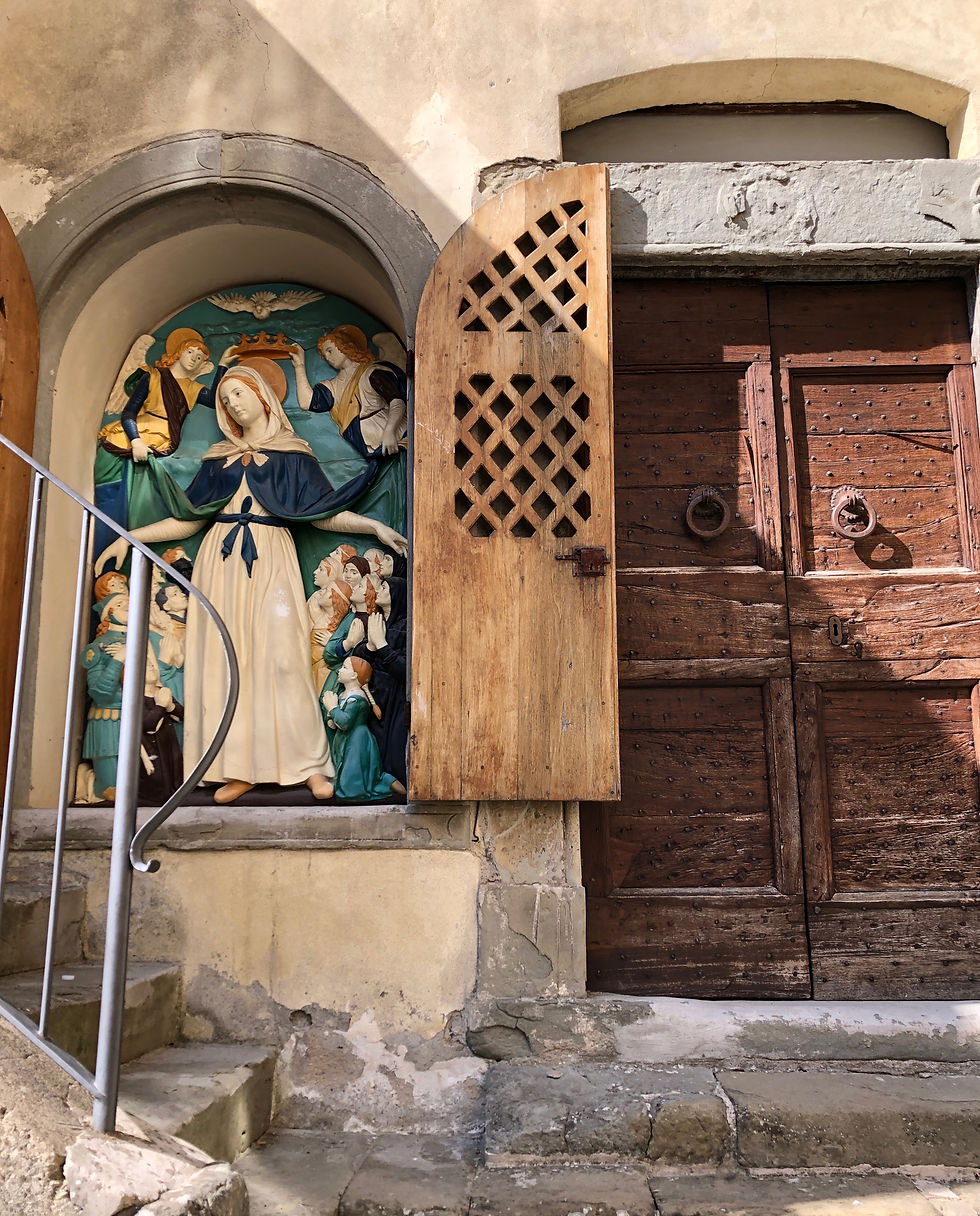Anghiari, Tuscany
- Mike
- Jan 9, 2022
- 4 min read
Updated: Apr 14, 2024

Anghiari is probably less famous for the battle that took place there in June 1440 than for the lost painting of the same battle by Leonardo da Vinci. The battle itself was in the Tiber valley below the town and was a victory for the Florentine Republic and its unofficial leader Cosimo the Elder. Cosimo at the time was perhaps the richest man in the world as the leader of the internationally famous Medici banking family. But this was still early in the Medici family history and they were yet to become the powerful political dynasty that history now records.

Cosimo had narrowly avoided execution seven years earlier and his return from exile after barely 12 months propelled him into an unassailable position of power in Florence where he became king in all but name.
The Battle of Anghiari was the third defeat in as many years for the Duke of Milan, starting with the Battle of Barga in 1437 and it put an end to Milan’s attempts to extend their Duchy into Tuscany. Milan’s famous condottiero Niccolò Piccinino was on the losing side which probably reduced his worth as a mercenary for his next employer and the victory also earned Florence large tracts of land in the Casentino from Cosimo’s defeated Florentine rival, the Albizi clan.

The painting of this battle was commissioned 63 years later and unsurprisingly Leonardo da Vinci was chosen to paint something massive to grace the Council Hall in the Palazzo Vecchio in the middle of Florence. The first problem for Leonardo was that shortly afterwards, his professional rival, the 28 year old rising star Michelangelo, was commissioned to paint a large mural for the opposite wall in the same building depicting the Florentine victory over Pisa at the Battle of Cascina in 1364.
The second problem was that Leonardo was experimenting with oil based pigments that for one reason or another didn’t adhere very well to the wall and as the completion deadline of February 1505 came and went he was also plagued by rainstorms and leaks in the roof of the building. Some time later Leonardo moved back to Milan and the Anghiari mural became yet another of his unfinished projects.

Strangely Michelangelo also left Florence without finishing his mural either, in his case to go to Rome to paint the Sistine Chapel. In the 1560s a later painter, Giorgio Vasari, was commissioned to renovate the Council Hall and he painted six battle scenes. There is some evidence based on recent technology that Leonardo’s partial painting may still exist behind Vasari’s work but no-one in authority as yet has been willing to damage Vasari’s mural to ascertain the truth.

To imagine what the Battle of Anghiari mural would have looked like we are left with a copy of the central portion painted by the Flemish artist Rubens a century later, probably from earlier copies because Leonardo’s unfinished work was visible for many years afterwards. It’s an impressive fury-filled close-up of swordsmen and their writhing horses in the heat of hand-to-hand combat and gives us a small glimpse of what might have been another of Leonardo’s great artistic legacies.
It's perhaps ironic that Anghiari is now so closely associated with Leonardo da Vinci because Michelangelo in fact is the local boy, his birthplace being only a few miles north of town.

Anghiari is in eastern Tuscany close to the borders with Umbria and le Marche. The best way to approach the town is from nearby Sansepolcro because there is an arrow straight 3 mile road between the two that allows you to fully appreciate Anghiari as you draw closer to it.
Once inside the hilltop town there are vistas everywhere of the surrounding countryside especially to the east where the Apennines have already begun their turn south to form the spine of Italy down through Abruzzo and on to Calabria.
I don’t know why somewhere like San Gimignano is on everyone’s list to visit and Anghiari is on so few because I much prefer the location of Anghiari and the surrounding countryside and while San Gimignano’s fame has become its undoing, the relative obscurity of Anghiari makes this medieval town a much more pleasant and relaxing place to visit in the summer.

The center of town is attractive and well preserved without being overly curated because it’s clearly a place where Italians still live and work, much more so than the center of San Gimignano or even Lucca these days. This atmosphere of normality in Anghiari imbues it with an unfussy authenticity and I’d say that it has struck a pretty good balance between tourism and local life.

There's a small museum in the center of town in Piazza Mameli dedicated to the battle and the history of Anghiari itself. It's in the Palazzo del Marzocco which was the name for the lion symbol of the Florentine Republic. It's visible high up on the building (bottom left photo) but this marzocco in Anghiari looks to me more like a labrador than a lion. Also, Garibaldi is unfortunately pointing to anywhere but Rome, looks more like the general direction of his home town of Nice.



